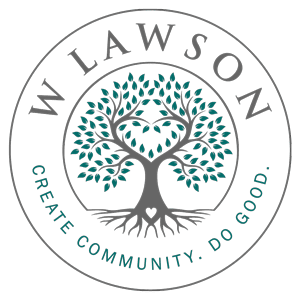Good People Talk – Creating An Inclusion Strategy
Marvell Adams Jr, founder and CEO of W Lawson, presents a comprehensive discussion on inclusion strategy for aging services organizations, highlighting demographic shifts and business imperatives for diversity.
Key Demographics Driving Inclusion
Adams presents compelling data showing significant demographic shifts in the aging population:
- Current: 56 million older adults (65+)
- Projected by 2040: 81 million older adults (47% increase)
- For Black, Indigenous, and People of Color (BIPOC): 107% increase by 2040
- LGBTQ+ older adults: Estimated to double from current 6 million
Most significantly, starting around 2040, the white 65+ population will begin declining by approximately 1 million per year, while the population identifying as two or more races will increase at a similar rate.
Four Essential Components of Inclusion Strategy
Adams outlines a framework with four key elements for organizations developing inclusion strategies:
- Engagement: Creating mechanisms for all voices to be heard, particularly those of marginalized staff and residents. This continuous dialogue forms the foundation for all other inclusion work.
- Assessment: Collecting objective data about past practices, historical context, present sentiments, and future trends. This includes evaluating organizational history, current staff experiences, and projected demographic shifts.
- Shared Learning: Establishing common understanding through education and dialogue. This aligns stakeholders with diverse perspectives on the inclusion journey and helps bridge knowledge gaps.
- Plan Development: Creating actionable objectives within a strategic framework that encompasses all stakeholders – residents, staff, and governance. This ensures comprehensive implementation rather than isolated initiatives.
All four components must operate within a framework of “360-degree accountability” involving staff, leadership, and governance.
Business Case for Inclusion
Adams emphasizes that inclusion isn’t just ethically right but increasingly essential for business viability:
- By 2040, traditional markets (affluent white older adults) will begin declining
- More than half of the 25 million increase in older adults will come from currently underserved populations
- Staff increasingly consider organizational inclusivity in employment decisions
- The growing housing crisis among older adults requires innovative solutions
Practical Implementation Insights
- Board diversity requires intentional measurement and planning tools like recruitment matrices
- Virtual board meetings create new opportunities for geographic diversity
- Resource allocation should be quantifiable – if attracting five diverse residents costs $100,000 in marketing, that investment must be prioritized
- Inclusion must be organization-wide, not just a “program” or checkbox
This presentation provides a data-driven framework for aging services organizations to develop comprehensive inclusion strategies that will be essential for future success in a rapidly changing demographic landscape.


